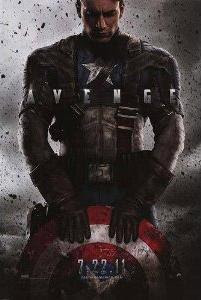
On a first thought the idea of mixing cowboys and aliens in a single movie may appear preposterous or cheeky. So, perhaps a bit surprisingly, what makes this concept cool is the fact the movie is serious about itself as opposed to the humorous and light approach to the Old West in, for example, Wild Wild West. Cowboys & Aliens is based on the graphic novel of the same name and is made by the director and cinematographer duo Jon Favreau and Matthew Libatique who also did Iron Man and Iron Man 2 together.
Apparently the filmmakers were aiming to merge two genres: the classic western and the aliens thriller. Cowboys & Aliens starts as a western, develops into an alien-abduction-sci-fi-meets-search-party-westerns and then dives into an alien thriller, mixing genre conventions in its way. The western part of the mix is easily the better one. There are numerous allusions to the classics: from the opening shot which tips its hat to Leone through Daniel Craig being Steve McQueen look-alike to the emulation of Conrad Hall's western looks. Matthew Libatique has certainly gone to great lengths to make the movie stay close to the classic look: it is shot with anamorphics and sticking with normal and short telephoto lenses, moving away from the more modern and aggressive appearance of the wide angle glass.
The story is not very interesting and, somewhat surprisingly given the topic, succeeds in being generic. The first act is the most convincing. This is the part where the filmmakers embrace western conventions and pacing to the fullest. Lots of steam is lost in the second act when the aliens are stripped of most of their mystery. The final encounter, which probably emulates western showdowns is largely underwhelming, mixing dull stunts with dull pathos.
The cast of Cowboys & Aliens is pretty good. Daniel Craig is successful in a mostly silent leading role offering a new spin on the old no-name hero motif. Harrison Ford is cool in anything, which is not a romcom, once again unleashing his usual mannerisms. He is certainly one of the few actors who can afford playing the same role over and over again and stay entertaining all the time. His iconic charisma adds interest to an otherwise rather flat movie. Fans are even served with an "I am your father" line. Sam Rockwell's and Paul Dano's talents aren't put to particularly efficient use. Especially the latter gives a quirky and whiny but somewhat tiresome performance, which is probably supposed to add some old school character actor color but will also annoy many moviegoers. Olivia Wilde is hardly making the role of her life but with her intriguing and obscure character she manages to bring some decent feminine flavor amidst all the cowboys and aliens populating the film.
Sticking to the classic looks, the filmmakers have stayed away from 3D. A high point in the movie is the first appearance of the aliens. Their assault on the town is largely achieved through practical effects: lights (including lasers) rigged onto a spydercam system with minimal (if any) use of CGI. The alien creatures themselves are based on a mixture of xenomorphs and predators in yet another nod to the classics.
If most of the above has not been sounding too awful do not hurry to raise your expectations. Cowboys & Aliens has an interesting premise but it is not realized even to its half potential and as already stated, the better parts end in the first third of the movie. For keen lovers of the two genres used to produce the mixture, the film could possibly be a watchable effort but if you are among the rest of the general movie audience, there are better films you can see.










